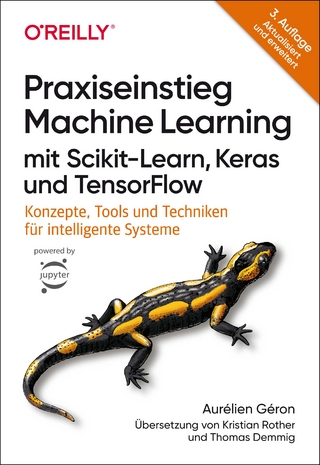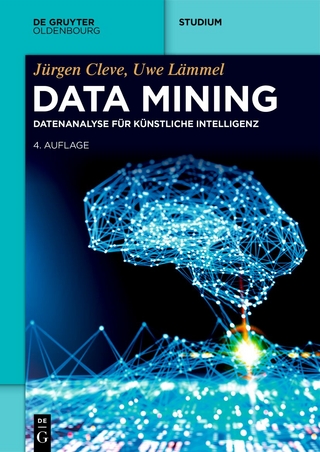
The Chemical Sensory Informatics of Food
Oxford University Press Inc (Verlag)
978-0-8412-3069-9 (ISBN)
instrumentation and sensors could be developed to measure, analyze, and predict the chemical sensory information of food. While many research groups endeavor to develop such systems, recent research confirms that the information obtained by humans during food interaction and eating involve extremely
complex interactions between the sensory stimuli and the information processes they invoke. Simple chemical analysis of the content of selected stimulants in food will likely not allow the prediction of the total information content that is desired. There is a longstanding need to better understand the generation of complex human sensations produced by food during eating and how they are integrated and translated into perceptions of food quality and safety.
The goal of this book is to compile recent advances, research findings and approaches, and current knowledge across the different aligned areas of research, where experts from chemistry, instrumentation, data analytics and physiology, as well as behavioral and sensory sciences focused on these topics.
Dr. Barry K. Lavine is a Professor of Chemistry at Oklahoma State University in Stillwater, OK. He has published more than 100 papers in chemometrics and is on the editorial board of several journals including the Journal of Chemometrics and the Microchemical Journal. Dr. Lavine's laboratory is a leader in the field of evolutionary computations, and the application of pattern recognition methods to the forensic examination of automotive paints using infrared and Raman imaging techniques. Brian Guthrie currently performs research to understand the chemical and physical origins of human sensations during the oral processing of food. He has worked in the food and ingredients industries with responsibilities spanning from knowledge building, utilizing fundamental science, to formulation and product development. Brian has also worked extensively in food sensory science. Jonathan Beauchamp is a physicist (MSci, University College London, U.K., 2002) with expertise in the detection of volatile organic compounds (VOCs) and proton-transfer-reaction mass spectrometry (PTR-MS). After completing his PhD in environmental physics (University of Innsbruck, Austria, 2005), Beauchamp worked for a small private company before relocating to Germany in 2008, to joining the Department of Sensory Analytics at Fraunhofer IVV in Freising, where he is currently a research associate and deputy head of department. Andrea Buettner studied Food Chemistry and is a Professor of Aroma Research. Her work has demonstrated the importance of the combined effects of the food matrix, physiology and behavior on flavor release and perception. At the University of Erlangen and Fraunhofer IVV, Freising, Dr. Buettner has broadened her research interests to include the field of odorants in the physiological context, with monitoring of uptake, distribution and biotransformation of odorants, as well as further physiological impact in humans.
1. Painting Flavor
2. Influence of Cross-Modal Sensory Interactions on Cheese Flavour Intensity and Character
3. Strategies To Enhance Saltiness in Food Involving Cross Modal Interactions
4. Influence of Auditory Cues on Chemosensory Perception
5. Contribution of Phenolic Compounds to Sensory Profiles of Blackcurrant Juices
6. Enantiomeric Distribution of Ethyl 2-Hydroxy-4-methylpentanoate in Wine, A Natural Enhancer of Fruity Aroma
7. Measuring Flavor Interactions Using Fractional Omission Testing
8. Evidence for Perceptual Interaction Phenomena To Interpret Typical Nuances of "Overripe" Fruity Aroma in Bordeaux Dessert Wines
9. Serial Dilution Sensory Analysis (SDSA) Applied To Exploring Sensory Attributes Essential for Food Aroma
10. Non-Homeostatic Intake of Snack Foods: Molecular Triggers and Effects on Brain Activity Pattern
11. The Role of Temporal Dominance of Sensations (TDS) in the Generation and Integration of Food Sensations and Cognition
12. Experimental Approaches To Better Understand the Retention of Aroma Compounds in Oro-Naso-Pharyngeal Cavities
13. Determination of Thresholds for Capsaicin in Aqueous and Oil-Based Solutions
14. Do Salivary Proteins Play a Role in Tasting Bitter Substances?
15. Molecular Determinants of the Bittersweet Janus Head of Steviol Glycosides from Stevia rebaudiana (Bert.) Bertoni
16. Nanotechnological Methods of Antioxidant Characterization
17. Proton-Transfer-Reaction Time-of-Flight Mass Spectrometry (PTR-TOFMS) for Aroma Compound Detection in Real-Time: Technology, Developments, and Applications
18. Potential Use of Food Synthetic Colors as Intrinsic Luminescent Probes of the Physical State of Foods
19. Application of Untargeted LC/MS Techniques (Flavoromics) To Identify Changes Related to Freshness of Food
20. Exploratory Chemometric Analysis on Source of Origin and Cultivar of Chinese Wolfberries Using Liquid Chromatograph-Mass Spectrometric and Flow Injection Mass Spectrometric (FIMS) Fingerprints
21. Flavoromics for Determining Markers of Cooked and Fermented Flavor in Strawberry Juices
22. Determining Causal Relationships between Physical Structure and Sensory Function in Food Systems via Partial Least Squares (PLS) Path Modelling
23. Odor-Structure Relationship Studies of Indan, Tetralin, and Isochroman Musks
| Erscheinungsdatum | 27.07.2016 |
|---|---|
| Reihe/Serie | ACS Symposium Series |
| Zusatzinfo | 93 |
| Verlagsort | New York |
| Sprache | englisch |
| Maße | 176 x 229 mm |
| Gewicht | 674 g |
| Themenwelt | Informatik ► Datenbanken ► Data Warehouse / Data Mining |
| Naturwissenschaften ► Chemie ► Analytische Chemie | |
| Technik ► Lebensmitteltechnologie | |
| ISBN-10 | 0-8412-3069-2 / 0841230692 |
| ISBN-13 | 978-0-8412-3069-9 / 9780841230699 |
| Zustand | Neuware |
| Haben Sie eine Frage zum Produkt? |
aus dem Bereich


